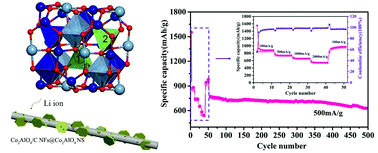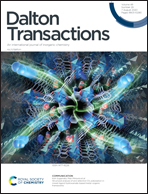Cobalt vacancies assisted ion diffusion in Co2AlO4 carbon nanofibers for enhancing lithium battery performance†
Abstract
The rational design of one-dimensional nanofibers, concentrating on the compositions, morphology, structure and defects, has emerging importance in the preparation of anode materials with desired performance for lithium-ion batteries. In the present work, we prepared cobalt vacancies enriched Co2AlO4/carbon nanofibers coated with Co2AlO4 nanosheets by using electrospinning and multi-step sintering processes. As the anode of the lithium-ion battery, the as-prepared nanofibers show excellent cycling stability, and particularly the discharge capacity can remain at 627.4 mA h g−1 after 500 cycles under 500 mA g−1. We contributed the improved performances to the carbon-based networks, the presence of cobalt vacancy on Co2AlO4 and the larger specific surface area of the present species. Moreover, density functional theory (DFT) calculations have implied that introducing Co vacancies could reduce the energy barrier of ion diffusion, leading to a faster diffusion rate of lithium ions during cycling. Apparently, the present approach could afford many essential advantages for anode material preparation, such as carbon-based matrix, larger specific surface area and cation vacancy, and more importantly, it can be extended to other spinel mixed transition metal oxides.



 Please wait while we load your content...
Please wait while we load your content...